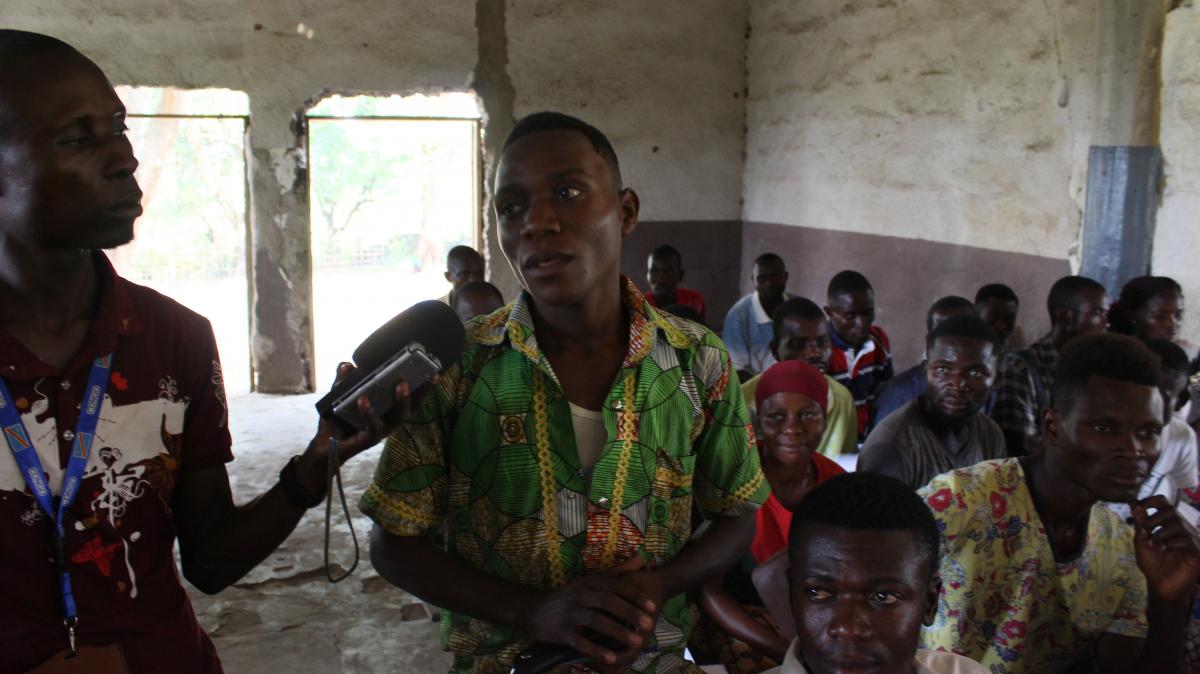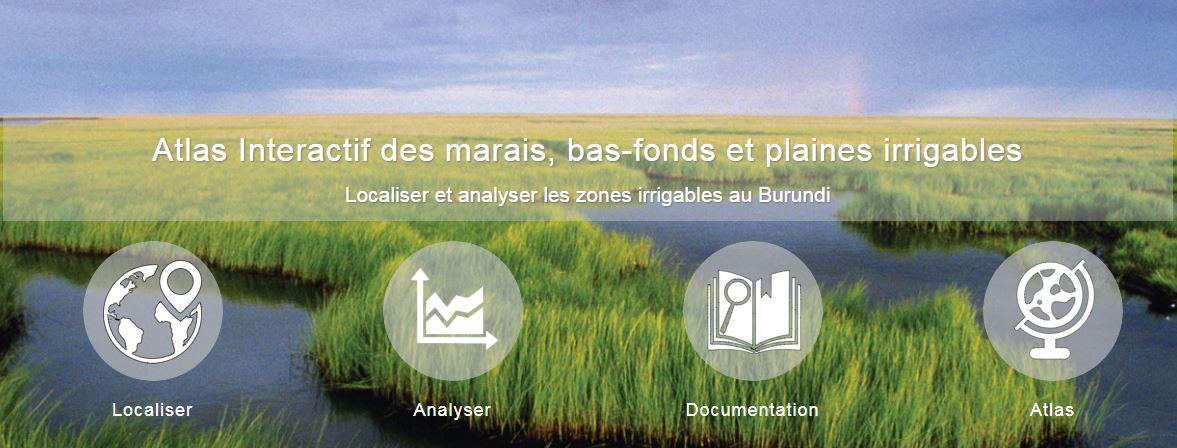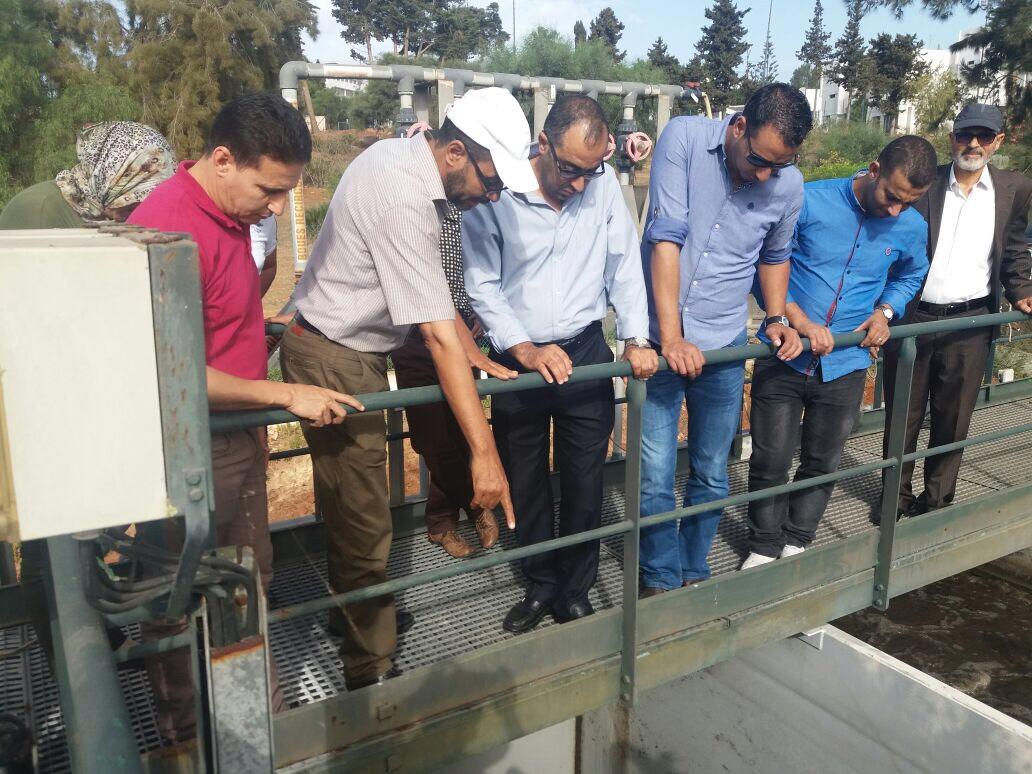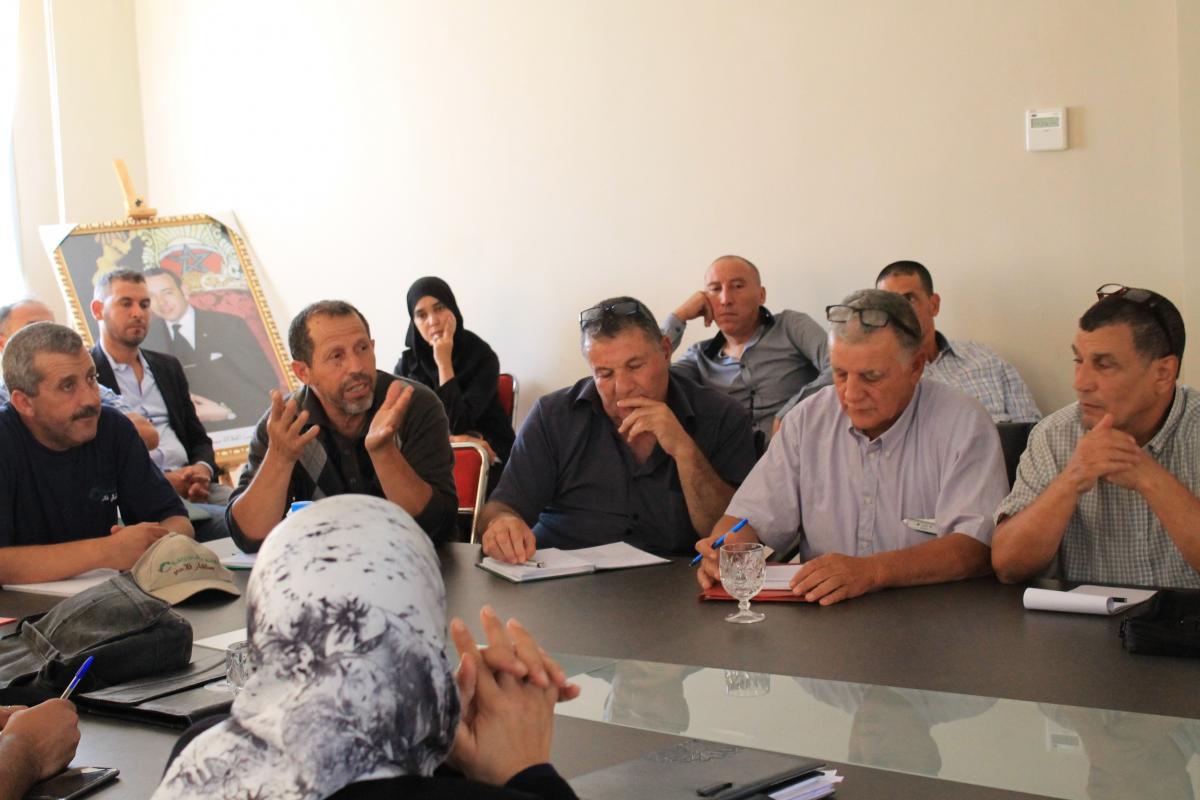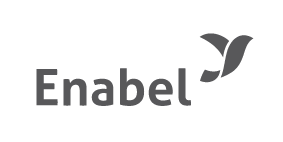Search
Viewing 2640 to 2655 of 3051 news
-

Voyage d'étude sur le thème de la Budgétisation sensible au Genre
Princia BAZABIDILA-MONASSALA | 31/10/2017
Dans le cadre d'un voyage d'étude sur la thématique suivante "Budgétisation sensible au genre" (BSG), financé par le projet Renforcement des capacités organisationnelles par l’octroi de bourses et organisé par l’Asbl « Le Monde selon les femmes ». Huits Directeurs issus du Ministère de l'Economie et des Finances du Maroc sont venus en Belgique du 1 au 7 octobre 2017. L’objectif de ce voyage d’étude est le partage d’expériences du processus belge et le transfert de savoir-faire et de compétences dans le domaine de Budgétisation Sensible au Genre : la mise en œuvre de la budgétisation sensible au genre (le « Gender Responsive Budgeting ») au sein des processus de planification et programmation budgétaire, des stratégies sectorielles, des systèmes d’information ainsi que le renforcement des capacités des responsables et cadres du ministère au niveau décisionnel en vue d'une meilleure conduite dudit processus.Suite à ce séjour en Belgique les participants ont eu la possibilité d’établir des stratégies sensibles au genre en vue d’obtenir des résultats positifs dans le cadre de la promotion de la BSG dans les politiques publiques .Egalement d’identifier les bonnes pratiques et leçons apprises de l'expérience belge en matière d’intégration du genre dans les processus de planification et programmation budgétaires.
-

Teaching coding from Scratch
Hanna DEKERK | 27/10/2017
With great curiosity students follow the moving graphic images on the computer screen while a coding trainer enthusiastically explains how to write simple scripts. For Esther Akiror, a 17-year old tailoring student at St-Daniel Comboni Polytechnic in Moroto, it is the first time she learns about coding. “This is very exciting, today I designed and decorated a cartoon.” Africa Code Week 2017 focuses on teaching ‘Scratch’, a visual programming language developed by the Massachusetts Institute of Technology (MIT) to lower the technical threshold for coding. Uganda is one of the 35 African countries hosting over 1,500 coding workshops involving 500,000 children and youth across the continent. As coding is considered the “blue collar” skill of the 21st century, it is introduced to empower future generations with the computer skills needed by a modern workforce. This year a collaboration was set up between Makerere University and partners such as BTC’s Support to Skilling Uganda (SSU) project, to introduce coding sessions at Vocational Technical Institutes (VTI’s) in Albertine-Rwenzori, Karamoja and Yumbe. Instructor teams composed of students from Makerere University gave coding sessions in VTI’s supported by the SSU project. These teams trained local students as well as IT-teachers of the VTI’s. 23-year-old Edith Ndagire, a third year Telecom Engineering student, was part of the instructor team at Lokopio VTI in Yumbe. For her it was an engaging experience: “The students here are enjoying the coding lessons and have grasped faster than I expected. They are disciplined”. The Africa Code Week initiative empowers youth such as Esther Akiror with relevant computer skills, even allowing them to create incomes for themselves. “As a tailoring student I might use coding to promote my future business.” BTC’s participation in Africa Code Week targets VTIs and populations that are often neglected when innovative interventions such as digitalization are rolled out.
-

La CTB Maroc passe à la radio pour une seconde fois
Meriem HILALI | 27/10/2017
Une deuxième interview avec la Société Nationale de Radiodiffusion et de Télévision marocaine a été diffusée le 25 octobre dernier sur la filière datte et amande. Nous vous invitons à l'écouter ici.
-

Inception Workshop captured project protagonists’ contributions
Marion FISCHER | 27/10/2017
Project activities must deliver progress towards objectives and results and to reaching the set performance indicators. This progress depends on the active contribution of project beneficiaries and stakeholders while activities are unfolding. On 25 October 2017 RALG Kon Tum united more than 100 project protagonists from provincial level and three piloting districts in a workshop. Participants developed their plans about how they will contribute to reaching the result indicators, what partners they want to include and what specific innovations to transparent and accountable local governance they promise to develop.
-

La CTB Maroc passe à la radio
Roxane VANLERBERGE | 25/10/2017
La Société Nationale de Radiodiffusion et de Télévision marocaine nous a rendu visite pour une interview sur le safran difusée le 19 octobre dernier sur SNRT Chaine Inter. Nous vous invitons à l'écouter ici.
-

First joint project launch workshop and PSC in Vinh
Krista VERSTRAELEN | 24/10/2017
On the 20th of October, the project launch workshop and the first PSC (Project Steering Committee) was jointly organized for the Support for responsive accountable local governance (RALG) projects in Nghe An and Ha Tinh. The meeting took place in Vinh and was co-chaired by the Vice Chairs of the PPC of both provinces and by the BTC-Representative. An impressive number of 80 participants was present: representatives from both provinces, from MPI and from Min. of Finance and from BTC. The project’s progress and implementation strategy were discussed, as well as the revised work plans and budget plans, which were approved. Special attention was given to the necessary speeding up of the implementation , now that the funds are available, as the deadline of the project will stay 30/06/2019. The 2 provinces decided to continue to exchange information during the implementation and to jointly also organize the next PSC, this time in Ha Tinh. At the closure of the meeting, all the ladies present were congratulated on the occasion of Women’s day in Vietnam.
-
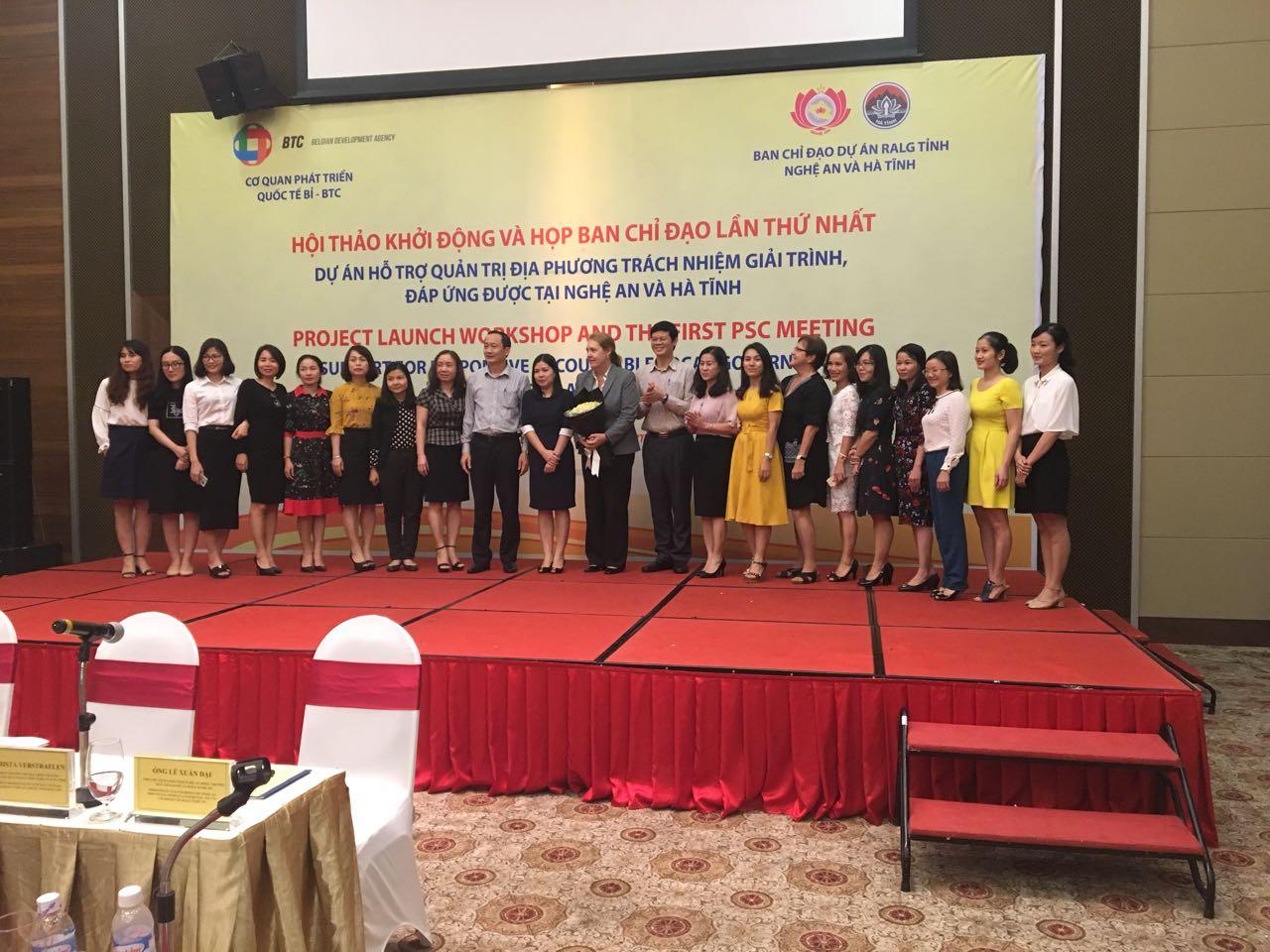
First joint project workshop and PSC in Vinh
Krista VERSTRAELEN | 24/10/2017
On the 20th of October, the project launch workshop and the first PSC (Project Steering Committee) was jointly organized for the Support for responsive accountable local governance (RALG) projects in Nghe An and Ha Tinh. The meeting took place in Vinh and was co-chaired by the Vice Chairs of the PPC of both provinces and by the BTC-Representative. An impressive number of 80 participants was present: representatives from both provinces, from MPI and from Min. of Finance and from BTC. The project’s progress and implementation strategy were discussed, as well as the revised work plans and budget plans, which were approved. Special attention was given to the necessary speeding up of the implementation , now that the funds are available, as the deadline of the project will stay 30/06/2019. The 2 provinces decided to continue to exchange information during the implementation and to jointly also organize the next PSC, this time in Ha Tinh. At the closure of the meeting, all the ladies present were congratulated on the occasion of Women’s day in Vietnam.
-
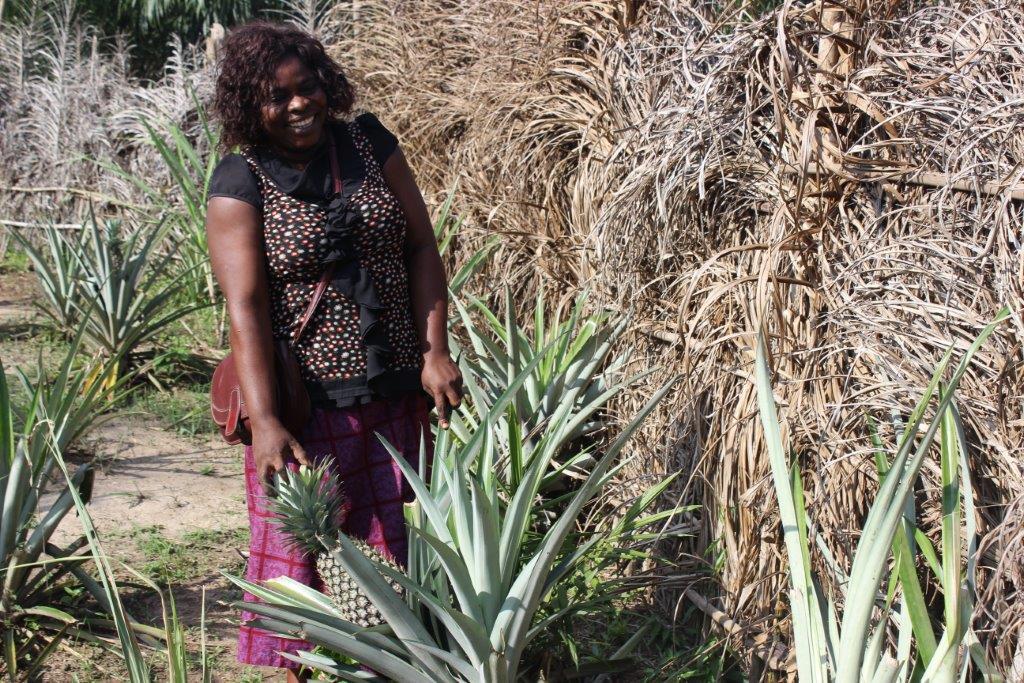
A Isangi, les dirigeantes des associations féminines sont formées en leadership et entrepreneuriat féminin afin d’augmenter leurs revenus.
Julie CLAASSENS | 23/10/2017
Marie-Thérèse Mombaya dirige une association des productrices agricoles dénommée en lingala ‘Etumba na bobola’, ou bien ‘Lutte contre la pauvreté’. Basée à Isangi, territoire situé à 127 km de la ville de Kisangni en province de la Tshopo, l’association s’est fixée pour objectif l’autonomie de ses membres. Et pour y arriver, des activités génératrices de revenu sont créées, les unes collectives, les autres individuelles.Actuellement, l’activité principale de l’association est la culture de l’ananas. A la périphérie du chef-lieu du territoire, l’association exploite une surface estimée au quart d’un hectare. Près de 150 pieds d’ananas se dressent sur le champ. Selon la présidente de l’association, la récolte pourrait rapporter à peu près l’équivalant de 150 dollars américains, le prix unitaire moyen s’élevant à 1500 francs congolais, soit 1 dollar américain. Un pourcentage du produit de vente est partagé entre les membres pour financer les activités individuelles qui permettent de subvenir aux besoins de leurs ménages respectifs. Tandis que le reste est réinvesti dans les activités collectives. Parmi les projets à court terme, Marie-Thérèse mentionne la mise en place d’un poulailler et d’une porcherie.Néanmoins, la grande difficulté de l’association reste l’accès à la terre. « La terre se vend et il nous faut au moins deux hectares », confie la dirigeante de l’association. Face à une demande de plus en plus importante, les propriétaires montent naturellement les enchères. « Il faut réunir à peu près l’équivalent de 70 dollars américains pour acquérir un hectare contre moins de 50 dollars il y a quelques années. » a indiqué notre interlocutrice. Au niveau individuel, les membres de l’association recherchent leur autonomie notamment par l’élevage des poules et le petit commerce des produits manufacturés principalement. Quoique modestes, leurs revenus contribuent principalement à la scolarisation et aux soins de santé des enfants.
-
Les avantages de la réhabilitation des routes, témoignage d'un participant à la campagne de sensibilisation sur la protection du patrimoine routier.
Julie CLAASSENS | 23/10/2017
« Nous avions beaucoup de difficultés, nous avons beaucoup souffert pour aller à Kenge et aller à l’université du Kwango où j’étudie. Nous n’allions qu’à pied parce que les motos jugeant la trajectoire trop longue n’arrivaient pas à la rivière. Elles coutaient très chers pour nous. Parfois les motards qui acceptaient de nous accompagner désistaient par manque des passagers qui puissent payer le montant exigé. Après la pluie, il fallait attendre longtemps avant de prendre la route, que ce soit pour les piétons, les vélos, les motos ou les jeeps, parce que le sol était très glissant. On ne peut même pas parler du nombre d’accidents. Un véhicule de la CTB qui avait pris la route de Kenge-Ndjili a échoué à Matadi Mayo, c’était avant la réhabilitation. Ils ne pouvaient pas rebrousser chemin ni continuer. L’ingénieur et l’animateur ont dormi dans un village-là. Au niveau de Mbalaka Yungu, c’était un autre calvaire. Tu pouvais passer toute une journée pour parcourir 17 kms ! De l’autre côté, sur l’axe Kenge-Tsakala-Mbewa, c’était également la même chose, mais au niveau de la rivière la situation empirait lorsqu’il était question de la traversée. Heureusement qu'aujourd’hui nous avons un bac et les routes sont praticables comme vous les avez découvertes pour venir ici chez nous. Même avec 1000 francs congolais aujourd’hui, je peux prendre la moto et arriver à la maison à moins de 15 minutes sans toute la boue qui nous couvrait le corps après la pluie »Exaucé M. Bakaba Mfutila, habitant de Kenge.
-
L’atlas interactif des marais, bas-fonds et plaines irrigables du Burundi en cours de finalisation
Jean-francois DETRY | 18/10/2017
L’atlas interactif des marais, bas-fonds et plaines irrigables du Burundi est un système d'identification et d'analyse permettant aux intervenants du secteur de disposer d'une vue globale sur les zones irrigables présentes dans le pays. Construit comme une infrastructure de données spatiales, cet outil interactif et convivial a pour but de renforcer la connaissance des marais, bas-fonds et plaines irrigables, d'analyser leur rentabilité et de planifier leur mise en valeur et leur aménagement.
-

EU Climate Fair
Guido COUCK | 17/10/2017
At the request of the EU delegation and the Belgian Embassy in Hanoi, the Belgian development agency participated in the EU Climate fair on October 14 in close cooperation with the two projects concerned : the Green Growth Strategy Facility (GGSF) and the program for integrated water resources management and urban development in relation to Climate Change in Vietnam (TSU (Technical Support Unit) and CC-projects in Binh Thuan, Ninh Thuan and Ha Tinh provinces.A boot was set up at the fair, showing the objectives and activities of the projects. Colleagues from the projects in the provinces and from Hanoi were present at the boot and they provided the very useful explanations to the visitors. Information material was at the disposal of the public.BTC organized a photo competition on the themes Water, Energy and Green lifestyle. The best twenty photos were selected and exposed during the event. The photographers (originating from two provinces and from Hanoi) were given a certificate and a cash price during a rewarding ceremony, in the presence of the EU embassador to Vietnam, Mr. Bruno Angelet, the First Secretary of the Belgian Embassy, Mrs. Anke Van Lancker, and the BTC Representative for Vietnam, Mrs. Krista Verstraelen.The participation of BTC was judged as very interesting and successful by the visiting members of the public and by the organizing EU delegation. BTC was very happy to receive tremendous help and support from the colleagues of both projects.
-
Renforcement des compétences de nos partenaires
Meriem HILALI | 13/10/2017
La semaine fut intensive pour le Programme National d’Assainissement ! En effet, 20 bénéficiaires du plan de formation du projet (sur un total de 80) viennent de terminer le 2ième atelier sur l’environnement et l’activité d’assainissement au Maroc. Celui-ci fait partie d’un cycle de 17 formations visant à renforcer les capacités de l’Office National de l’Électricité et de l’Eau Potable (ONEE). De plus, cette semaine fut l'occasion d'inaugurer un projet d'assainissement à Ouazzane au nord du Maroc. Le programme APNA participe à élargir l’accès au service d’assainissement liquide à 80% de la population des zones urbaines et l’épuration de 60% des eaux usées à l’échelle du Royaume. http://www.onep.ma/Communiques-Presse-ONEP/communiques-2017/CdP_2017-10-11_Formation_PNA.pdf
-
Former pour valoriser
Meriem HILALI | 11/10/2017
Dans le cadre du développement de la filière des amandiers dans la région de l’Oriental, le projet organise en ce moment une série de formations pratiques pour les arboriculteurs : - Procédures administratives et gestion comptable; - Techniques de vente et de marketing des produits de terroir ; - Labellisation et techniques de transformation et de conditionnement des amandes ; - Management et gestion des unités de valorisation des amandes ; - Techniques de greffage, de récolte et du conditionnement des amandes. Ces formations leur permettront de mieux gérer les coopératives ou groupements d’intérêt économique, de mieux mettre en valeur leurs produits et au final, d’augmenter leurs revenus.
-
A Gemena, la formation des forgerons continue à apporter beaucoup aux apprenants.
Julie CLAASSENS | 11/10/2017
Dans le cadre de son appui au renforcement de la filière informelle d’artisans forgerons à Gemena, le projet EDUMOSU avait fait appel à un expert en forge venu de la Belgique, pour former les forgerons formateurs, qui à leur tour poursuivent l’œuvre de former les jeunes apprenants. Les forgerons sont organisés au sein de l’Association des Forgerons de Gemena (AFG). En ce moment, la formation se poursuit avec 8 apprentis sur des différentes techniques de forge. L’atelier a commencé le 25 septembre, se clôturera le 3 novembre et l’organisation se déroule de la manière suivante: les trois premiers jours de la semaine sont consacrés aux formations théoriques et les autres jours les apprenants sont affectés dans les ateliers des forgerons formateurs, dans le but de se familiariser avec toutes les réalités pratiques du travail. A la fin de cette formation les apprentis seront capables : d’installer un atelier de forge selon les normes requises; fabriquer les brides ; observer quelques règles de sécurité et de protection pendant le travail de forge ; fabriquer des outils de travail à chaud en maitrisant les techniques de refroidissement (burin, pince, …) ; fabriquer le foyer amélioré ‘feu de l’équateur’ dans le cadre de l’économie du bois de chauffe et de la protection de l’environnement.
-
Marchés publics passés par la CTB au cours de l'année 2015-2016-2017 dans le cadre du PAIR
Guido COUCK | 10/10/2017
Marchés publics passés par la CTB au cours de l'année 2015-2016-2017 dans le cadre du projet d'appui institutionnel au processus de regionalisation au Mali
